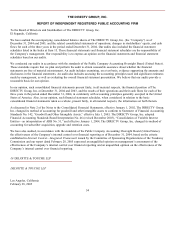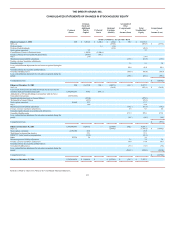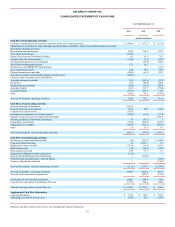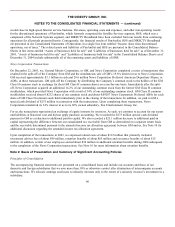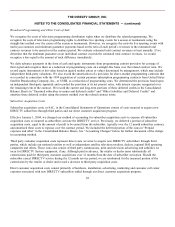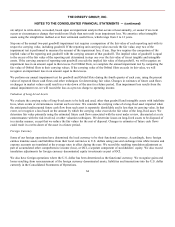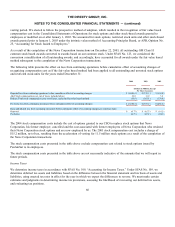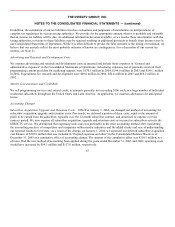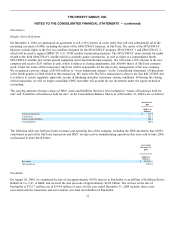DIRECTV 2004 Annual Report Download - page 71
Download and view the complete annual report
Please find page 71 of the 2004 DIRECTV annual report below. You can navigate through the pages in the report by either clicking on the pages listed below, or by using the keyword search tool below to find specific information within the annual report.
THE DIRECTV GROUP, INC.
NOTES TO THE CONSOLIDATED FINANCIAL STATEMENTS — (continued)
Broadcast Programming and Other Costs of Sale
We recognize the costs of television programming distribution rights when we distribute the related programming. We
recognize the costs of television programming rights to distribute live sporting events for a season or tournament using the
straight-line method over the course of the season or tournament. However, we recognize the costs for live sporting events with
multi-year contracts and minimum guarantee payments based on the ratio of each period’s revenues to the estimated total
contract revenues to be earned over the contract period. We evaluate estimated total contract revenues at least annually. If we
determine that the minimum guarantee on an individual contract exceeds the estimated total contract revenues, we would
recognize a loss equal to the amount of such difference immediately.
We defer advance payments in the form of cash and equity instruments from programming content providers for carriage of
their signal and recognize them as a reduction of programming costs on a straight-line basis over the related contract term. We
record equity instruments at fair value based on quoted market prices or values determined by management, which may include
independent third-party valuations. We also record the amortization of a provision for above-market programming contracts that
we recorded in connection with the 1999 acquisition of certain premium subscription programming contracts from United States
Satellite Broadcasting Company, Inc., or USSB, as a reduction of programming costs. We determined the provision based upon
an independent third-party appraisal and recorded the provision at its net present value, with interest expense recognized over
the remaining term of the contract. We record the current and long-term portions of these deferred credits in the Consolidated
Balance Sheets in “Unearned subscriber revenues and deferred credits” and “Other Liabilities and Deferred Credits” and
amortize these deferred credits using the interest method over the related contract terms.
Subscriber Acquisition Costs
Subscriber acquisition costs, or SAC, in the Consolidated Statements of Operations consist of costs incurred to acquire new
DIRECTV subscribers through third parties and our direct customer acquisition program.
Effective January 1, 2004, we changed our method of accounting for subscriber acquisition costs to expense all subscriber
acquisition costs as incurred as subscribers activate the DIRECTV service. Previously, we deferred a portion of subscriber
acquisition costs, equal to the amount of profit to be earned from the subscriber, typically over the 12 month subscriber contract,
and amortized these costs to expense over the contract period. We included the deferred portion of the costs in “Prepaid
expenses and other” in the Consolidated Balance Sheets. See “Accounting Changes” below for further discussion of the change
in accounting method.
Third party customer acquisition costs represent direct costs we incur to acquire new DIRECTV subscribers through third
parties, which include our national retailers as well as independent satellite television retailers, dealers, regional Bell operating
companies and others. These costs also consist of third party commissions, print and television advertising and subsidies we
incur for DIRECTV System equipment, if any. Although paid in advance, the retailer or dealer earns substantially all
commissions paid for third party customer acquisitions over 12 months from the date of subscriber activation. Should the
subscriber cancel DIRECTV service during the 12 month service period, we are reimbursed for the unearned portion of the
commission by the retailer or dealer and record a decrease to third party acquisition costs.
Direct customer acquisition costs consist primarily of hardware, installation, advertising, marketing and customer call center
expenses associated with new DIRECTV subscribers added through our direct customer acquisition program.
62




